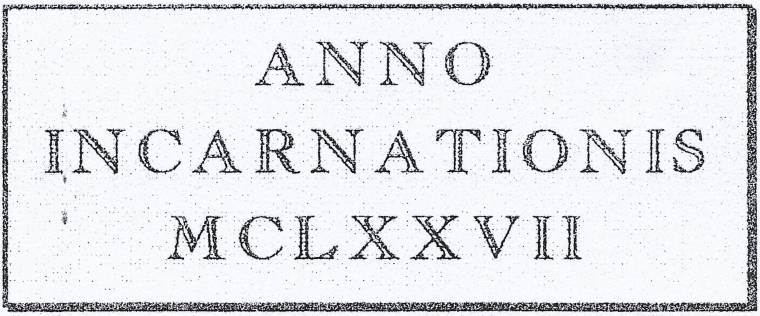John Middleton, the vicar in 1802, claimed that he had seen the date 1177 on a foundation stone whilst the Curzon vault was being dug under the chancel in 1797.
Outside the east wall of the chancel (the wall unfortunately ‘improved’ by black knapped flints in the 1860s), there are steps leading down to the vault. The entrance is now bricked up, but about ten years ago it was opened and the then vicar, Oscar Muspratt, Earl Howe and myself, went in to explore. There was no obvious inscription, but poor lighting and the presence of a large number of ancestral bones and decaying coffins was inhibiting and we did not feel able to have a close search.
In the absence of any physical evidence can we reasonably believe John Middleton’s claim? Expert opinion is divided. To find an inscription of such an early date would, according to my Oxford supervisor Dr. John Blair, a leading historian of the early church, be both unprecedented and improbable. On the other hand, Dr. Doris Jones-Baker, who specialises in the graffiti found in churches, agrees that it would be unique but regards it as perfectly possible since there is no doubt that in later centuries the dates of building and consecration were typically cut into the stonework. Both the age of the font and Dr. Rouse’s estimate for the age of the north wall of the nave support 1177, which also marries in with the wider picture which saw the great majority of later medieval parish churches built by the mid 12th century and the parochial system crystallised by 1200.
It is a pity that John Middleton did not describe in detail how the date was written – whether in Roman numerals or in our modem Arabic form which was not commonly used before about the 14th century. The date Middleton saw would presumably have been written as MCLXXVII, perhaps preceded by ‘anno incamationis’, but he was an educated man, the tutor to several ‘young gentlemen’ and one can reasonably assume that he was entirely familiar with Latin, which remained the language of record until the 1730s, and did not regard it as of any particular significance.
My own view is that Middleton’ s claim was an accurate one. He had been curate and vicar for 42 years when he died, ‘universally regretted’ in 1808, and his many entries in the parish register are meticulous, neat and full of interesting information. There seems no good reason why should wish to mislead the author of Magna Britannia. On this view, we missed our 800th anniversary in 1977.
John Middleton’s letter to the Lysons brothers authors of Magn Britannica, Opens as a PDF.
© Miles Green, April 1996.

